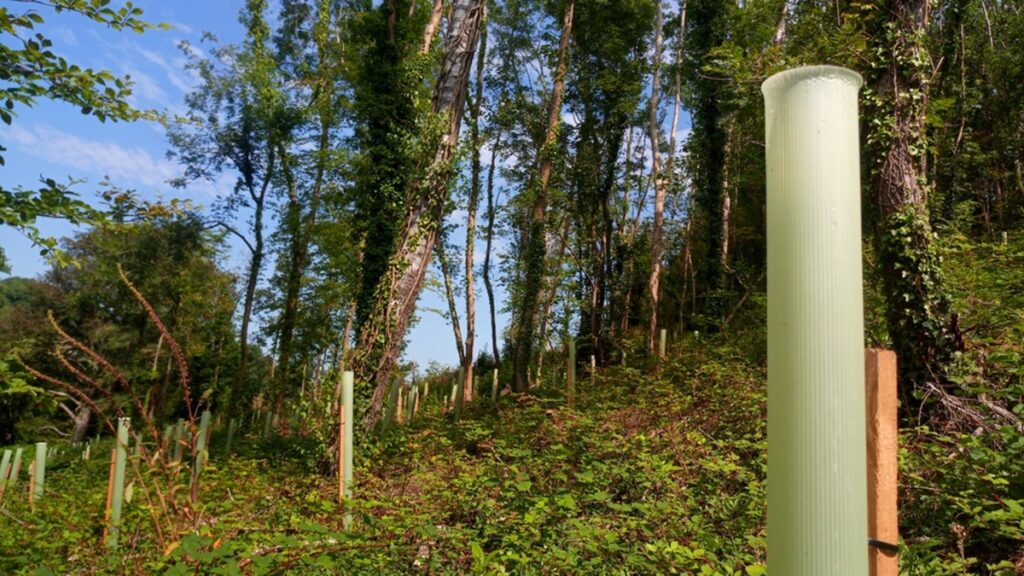Understanding Biodiversity Net Gain requirements in Bournemouth
The Environment Act 2021 introduced biodiversity net gain (BNG) as a legal requirement, reshaping how development projects are planned and approved. The aim is clear: to ensure that biodiversity is in a measurably better state after development than before. This now applies to nearly all planning applications, with limited exemptions, notably certain small-scale or pre-existing proposals.
In Bournemouth, developers must validate their plans through a professional biodiversity net gain assessment, using the government’s Biodiversity Metric tool. This establishes a biodiversity baseline and predicts post-development biodiversity value. A minimum 10% uplift is required, achieved through habitat creation, enhancement, or restoration, either on-site or via off-site biodiversity units, provided with robust evidence to meet local planning approval.

Ecological Features in Bournemouth
Bournemouth is ecologically rich, featuring coastal habitats, heathlands, chalk grasslands, and ancient woodlands. Protected species like sand lizards, smooth snakes, bats, and dormice are present across these landscapes. Importantly, many sites in the BCP area fall within or surround designations such as SSSIs, SACs, and internationally significant Dorset heathlands.
The Dorset Heathlands Planning Framework (2020–2025) mandates mitigation for developments within a 400-metre buffer and strategic compensation measures, including Strategic Access Management and Monitoring (SAMM) and Heathland Infrastructure Projects (HIPs) for areas up to 5 km away. Bournemouth, Christchurch and Poole (BCP) Council is particularly vigilant about these impacts and regularly enforces the safeguards.
Habitat Enhancement and Conservation in Bournemouth
BCP Council supports biodiversity through local planning policies, embedding biodiversity net gain within broader environmental goals like the Dorset Local Nature Recovery Strategy. Planners expect development proposals to improve biodiversity by prioritising habitat conservation, restoring degraded ecosystems, and aiding connectivity via green infrastructure in line with the BCP local plan. Delivering ecological enhancements, whether through native planting, sustainable drainage (SuDS), or heathland restoration in the BCP area aligns with these strategies, especially if they help offset visitor pressure on fragile habitats such as the heathlands.
Preparing a Biodiversity Net Gain Report
A compliant BNG submission begins with a baseline habitat survey conducted by a qualified ecologist, mapping habitat types, extent, condition, and protected features. This is followed by a post-development forecast using the Biodiversity Metric. Any shortfall against the required 10% net gain must be addressed.
On-site habitat enhancement is preferred, but where site constraints make this unachievable, developers may purchase off-site biodiversity units from registered habitat banks. These units must be managed for a minimum of 30 years and be legally secured.
BNG Plan: Structure and Compliance
A full Biodiversity Net Gain bng plan must clearly outline biodiversity improvements, adhere to the mitigation hierarchy (avoid, minimise, compensate), and include a long-term habitat management and monitoring strategy, typically extending across 30 years.
It must also reference local priorities, demonstrating alignment with the Dorset Local Nature Recovery Strategy, the BCP council local plan and Green Infrastructure guidelines, and heathland mitigation obligations.
Addressing Dorset Heathland Pressures
If development sits within 400 meters of protected heathland, it is often not permitted unless it avoids harm. For sites up to 5 km away, contributions to SAMM are required to manage recreational pressures. These contributions are typically collected via planning obligations and help enable the careful stewardship of these sensitive ecosystems.
Delivering Biodiversity Net Gain in Bournemouth
On-site solutions may include creating pollinator corridors, restoring coastal or grassland habitats, installing green roofs, or enhancing public realm planting per the Urban Greening Design Guide.
Off-site units may be purchased when on-site enhancements are insufficient. These units represent habitat improvements elsewhere: developers who purchase units must meet the statutory requirement to secure long-term management agreements.
Professional Biodiversity Net Gain Support
Our ecological consultancy provides dedicated Biodiversity Net Gain support across Bournemouth Christchurch and Poole, the south east and the wider UK. We handle the entire process, from baseline assessments and Metric modelling to habitat design and negotiating off-site unit solutions. Our expertise ensures compliance with both national BNG legislation and local ecological priorities, including heathland mitigation.
Get a Free Quote for Biodiversity Net Gain Plans in Bournemouth
Planning a development in Bournemouth? Start early by obtaining a free, no-obligation quote tailored to your site’s requirements. Our team will conduct a site visit, complete assessments, and draft a compliant Biodiversity Net Gain bng plan to support your planning application and comply with legislation in the Environment Act and bcp council requirements. Simply contact us today via our online form or use the telephone number or email address on this page.